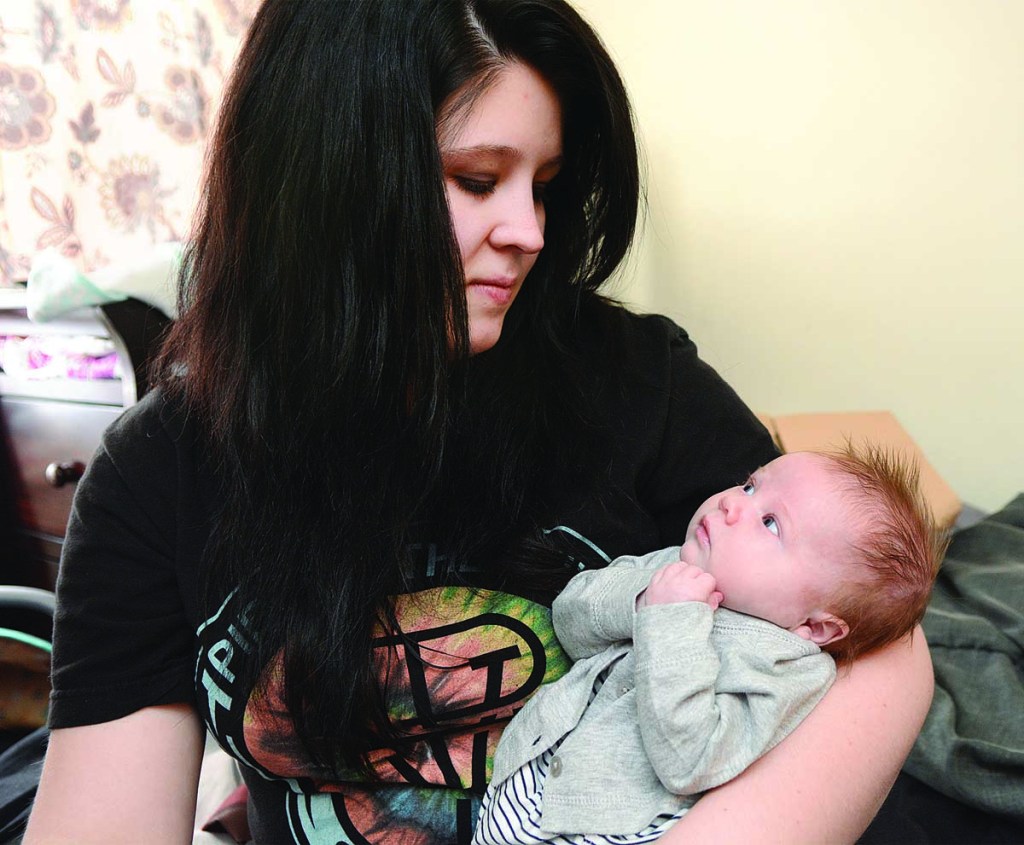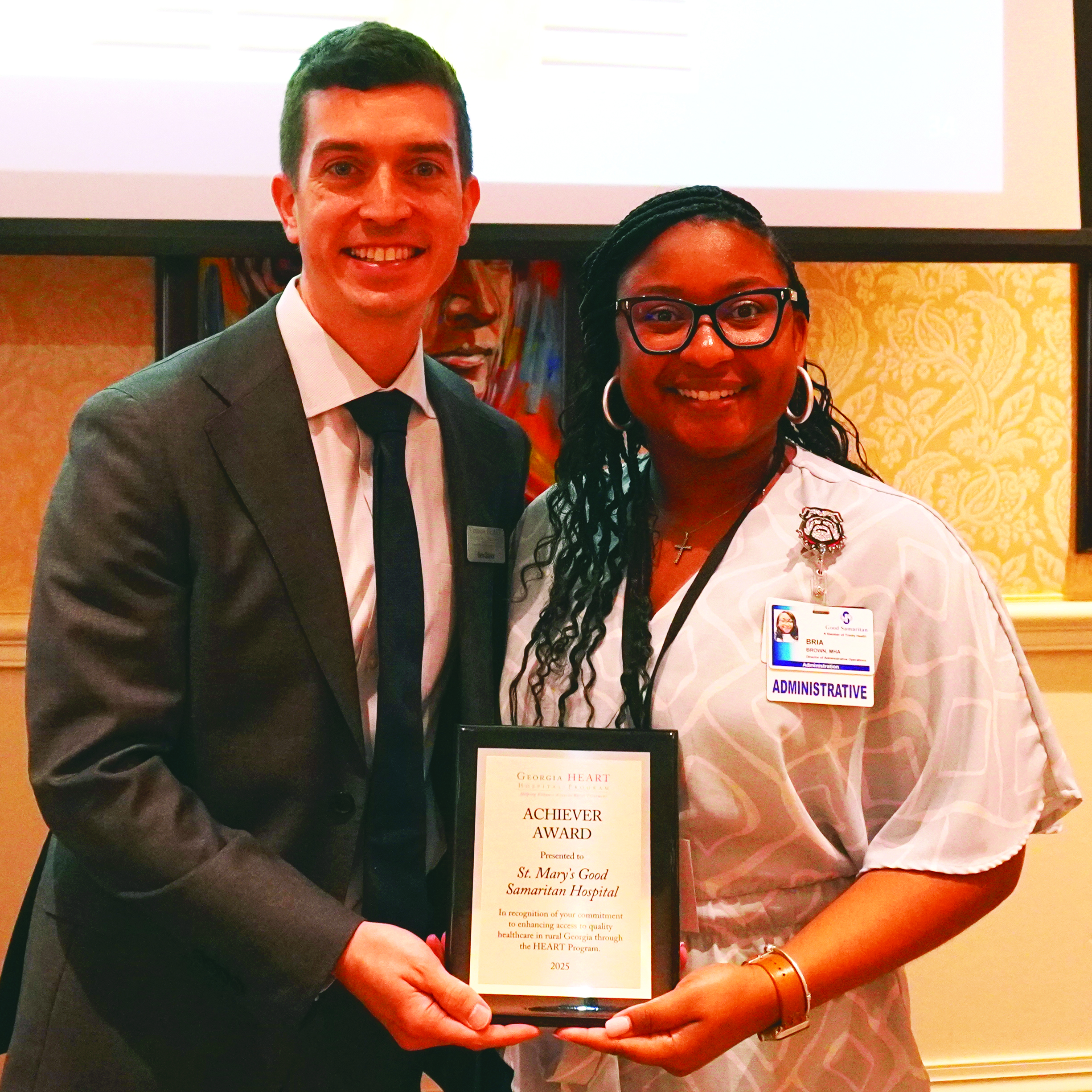Fewer kids having kids: Decline in teen pregnancy tied to education, experts say
Published 1:30 pm Monday, March 21, 2016

- Asia Swanger holds onto her daughter, Alice Lewis, in Milton, Pennsylvania earlier this month.
Asia Swanger says her newborn, Alice Lewis, is “a blessing.”
The 18-year-old mom from New Columbia, Pennsylvania is happy that her 2-month-old daughter is both happy and healthy.
“She’s a good baby,” Swanger said as Alice’s father, Zak Lewis, also of New Columbia, sat nearby, clutching the child to his chest.
It’s also a blessing, experts say, that fewer teenagers in Pennsylvania and across the United States are having children.
The current national rate is 26.5 births per 1,000 women aged 15 to 19 years, according to America’s Health Rankings. Massachusetts has the lowest rate with 12.1 births per 1,000 women and Arkansas has the highest rate with 43.5 births per 1,000 women. Since 1993 the teen pregnancy rate has declined 56 percent, from a rate of 60.3 births per 1,000 women aged 15 to 19 in 1993 to 26.5 in 2015.
The trend can be attributed, at least in part, to comprehensive sex education programs for teen boys and girls and increased use of contraceptives, said Donna Pauling, a registered nurse with Nurse Family Partnership, a Geisinger Health System-operated program for low-income, first-time mothers in Pennsylvania.
Even though the Nurse Family Partnership client is the mother, Pauling said it is very important, whenever possible, to have fathers involved because the parents are their child’s first teacher and they each have something to bring to parenting that could potentially enrich their child’s life.
How schools across the nation are tackling the issue
Pauling says clear evidence exists that shows comprehensive sex education programs can change the behaviors that put young people at risk of pregnancy.
Such programs have been shown to delay sexual debut, reduce frequency of sex and number of partners, increase condom or contraceptive use, or reduce sexual risk-taking, Pauling said. According to the Sexuality Information and Education Council of the United States, “‘Two-thirds of the 48 comprehensive programs (studied) had positive behavioral effects.'”
However, according to The Washington Post, sex education is uneven across the nation with fewer than half of the states requiring that it be taught.
In Tennessee, the Cumberland County Board of Education recently approved the use of Life on Point curriculum, which includes “topics that range from managing emotions and boundary setting to dating, addiction, and actualizing one’s potential,” as part of a requirement to implement a human growth and development curriculum.
Tammy Stewart, supervisor of coordinated school health for Cumberland County Board of Education, explained, “Life on Point helps us to meet what is required by the state department and where we fall short, unfortunately, in our teen pregnancy rates.”
Tennessee law requires communities to stay under 19.5 births per 1,000 mothers 15 to 17 years old, if the county exceeds this then every school district is required to implement a “family life education” course, which must emphasize abstinence until marriage and instruction in the prevention of HIV/AIDS and sexually transmitted diseases, in accordance with the state board of education. Last year, Cumberland County had a rate of 25.6 per 1,000 women. However, this is a drop of 43 percent since 2004, according to Stewart.
Kansas has seen a historic decline in teen birth and pregnancy rates, according to The Associated Press. A new bill that the House Education Committee approved in February would require Kansas public schools to get parents’ consent before students could enroll in sex education courses. Critics of this bill are worried that it could undo the decline, which is a drop of 47 percent since 1993 of teens age 15 to 19 years.
This “opt-in” bill would also allow parents to review curriculum before enrolling their children in the classes. Most of the 286 Kansas school districts currently have an “opt-out” policy, where children are automatically enrolled in sex education courses unless the parents exempt them.
Bill Albert, the chief program officer of the National Campaign to Prevent Teen and Unplanned Pregnancy, told The Associated Press that he worries that the 40 percent of Kansas high school students who are sexually active will be robbed of information that helps them prevent pregnancies if the measure passes.
Pennsylvania state law does not require sex education, according to sexetc.org. Each school board decides what to teach and when.
“Although we teach that abstinence is preferred behavior, we also teach the boys in our classes about responsibility and to know what is right and what is wrong behavior,” Diane Sones, a teacher at the Shikellamy School District in Pennsylvania, said. “We have very frank talks about having self-control if you’re in a situation that could lead to sex. And we teach that to both boys and girls.”
Frank talks about responsibility of boys
Classroom discussions also focus on the boy’s responsibility if the relationship results in a birth, Sones said.
“We say, ‘If you have that one night of fun, it doesn’t mean you are relieved of the duty of fatherhood if the girl gets pregnant. You’ll need to be a part of the child’s life,’’’ Sones said. “We don’t want the boys to think they don’t have a role. And we tell the girls that if they have consensual sex, they both have to take a role in the raising of a child.”
Enid Public Schools, in Oklahoma, has taken classes a step further, offering a teen parenting class at an alternative education facility. The class, which is in partnership with Hope Outreach Parenting Program, teaches students about labor, how babies develop, baby sign language, how to care for a baby after birth, and what to do about issues like teething and diaper rash.
“It’s teaching them to be a parent,” said Allison Aholt, a mentor with the Hope Outreach program.
The classroom environment also allows students to discuss how their pregnancies are different and similar; how bodies change as pregnancies progress; epidurals versus natural births; and length of labor.
The class has about 10 enrolled, Aholt said, and no one requires the students to come, but the girls who do attend are able to earn points that can be spent in the program’s baby store for new or gently used baby items.
More teens having less sex?
Dr. Pat Bruno, a pediatrician in Danville, Pennsylvania, and medical director of the Child Advocacy Center, in Sunbury, Pennsylvania, cited another reason that could explain the trend.
“I would love to think that teens are less sexually active,” he said. “That might play a role in the decline.”
But significant drops in teen pregnancy doesn’t mean that communities have stopped actively fighting to prevent it.
A new program in Lawrence, Massachusetts was announced in October 2015 to curb teen pregnancy. The goal of the program, which is spearheaded by the Massachusetts Alliance on Teen Pregnancy, is “to build healthy teens by bolstering referral links in the community, increasing access to sexuality education, developing communication and leadership skills and by addressing the root causes of teen pregnancy.”
Lawrence continues to rank among the top 10 in Massachussets for teen pregnancy, according to Vilma Lora, Director of Social Justice Initiatives at the YWCA of Greater Lawrence.
“Teen pregnancy often contributes to high school drop-out among girls, leading to other socioeconomic and systemic factors, such as poverty…This grant partnership will allow us to address the issue of planned and unplanned pregnancies among teens, using proven practices that best fit the need of our community,” Lora said in a statement.
But life goes on
While Asia’s story is growing more rare, there are resources available to help teen parents, including Nurse Family Partnership. In this program registered nurses follow mothers from the time they learn they are pregnant until their baby is 2 years old, with the goals being healthier pregnancies, healthier babies and helping families become more self-sufficient.
“They taught me what it was like to have a healthy baby and then be a good mom,” Swanger said.
Pauling — part medical adviser, part psychologist and all heart — was assigned to Swanger.
Under Pauling’s guidance, Swanger stayed in school under an auxiliary program at Milton, where she attended classes outside of a traditional classroom situation between 11 a.m. and 7 p.m. and completed her school work on computers.
“A lot of pregnant teenagers who go to Milton go to auxiliary school,” Swanger said. “It’s easier because we get bullied in school for being pregnant.”
Swanger plans to graduate from Milton this year, and will pursue a dream she had long before she became pregnant — studying culinary arts.
“I’m going to college,” she said, “and just because you have a baby, doesn’t mean you can’t do what you love to do.”
The (Sunbury) Daily Item, The Crossville (Tennessee) Chronicle, The Enid (Oklahoma) News and The (Massachusetts) Eagle-Tribune contributed to this story.





